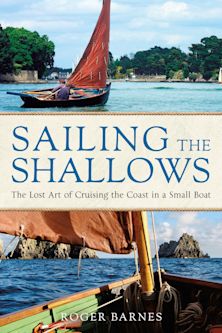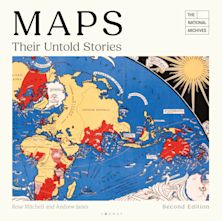Native American Archaeology in the Parks
A Guide to Heritage Sites in Our National Parks and Monuments
Native American Archaeology in the Parks
A Guide to Heritage Sites in Our National Parks and Monuments
- Delivery and returns info
-
Free UK delivery on orders £30 or over
Description
Historian Wallace Stegner characterized America’s National Park system as “the best idea we ever had.” One can quibble with that, but, indeed, it was a pretty good idea! This book specifically is a guide and a celebration of 30 of those national parks, national historical parks, and national monuments that, each in its own way, reveals the histories and cultures of America’s first inhabitants, the Native Americans.
Its pages will take you to:
great mounds in Ohio where the dead were laid to rest in sumptuous splendor 2,000 years agoa place in Iowa where 1,000 years ago, Native Americans sculpted earth into the forms of giant bears and birdsa quarry in Minnesota where Native People have, for hundreds of years, extracted blood-red stone for their ceremonial pipesthe remains of a village in North Dakota visited by Lewis and Clark in the early 1800s and the home of their guide Sacageweatruly breathtaking, more than 700-year-old cliff dwellings in Arizona and Colorado, that will astonish you in their ethereal beauty and architectural ingenuityphantasmagorical images of 7-foot-tall, wide-eyed spirit beings in Utah painted more than 1,000 years agoAnd many more.All of these sites have in common the fact that, at the insistence of Native and non-Native people, men and women, the federal government of the United States set them aside as places to preserve, study, and revere as part of the American story no matter where your ancestors came from, how they got here, or how long ago. Read this book and visit the historically sacred sites enshrined in our national parks, national historical parks, and national monuments, places that reveal the creativity and genius of the Native People of North America.
With 180 color photographs and complete visitor information, this is a wonderful guide to Native American archaeology in our national parks and monuments.
Table of Contents
Preface
Acknowledgements
Chapter 1: National Parks and National Monuments: Our “best idea.”
Chapter 2: History and Cultures of the First Peoples of America
Part II: Oh the Places You’ll Go
American Southwest, Villages Before European Contact
1. Canyon de Chelley National Monument, Arizona
2. Casa Grande Ruins National Monument, Arizona
3. Montezuma Castle National Monument, Arizona
4. Navajo National Monument, Arizona
5. Tonto National Monument, Arizona
6. Tuzigoot National Monument, Arizona
7. Walnut Canyon National Monument, Arizona
8. Wupatki National Monument, Arizona
9. Canyons of the Ancients National Monument, Colorado
10. Mesa Verde National Park, Colorado
11. Aztec Ruins National Monument, New Mexico
12. Bandelier National Monument, New Mexico
13. Chaco Culture National Historical Park, New Mexico
14. Gila Cliff Dwellings National Monument, New Mexico
15. Hovenweep National Monument, Utah and Colorado
First Peoples Rock Art
16. Petrified Forest National Park, Arizona
17. Petroglyph National Monument, New Mexico
18. Bears Ears National Monument, Utah
19. Canyonlands National Park, Utah
20. Capitol Reef National Park, Utah
21. Dinosaur National Monument, Utah and Colorado
Mound Builders of the East
22. Ocmulgee Mounds National Historical Park, Georgia
23. Effigy Mounds National Monument, Iowa
24. Poverty Point National Monument, Louisiana
25. Hopewell Culture National Historical Park, Ohio
Raw Material Procurement Sites
26. Pipestone National Monument, Minnesota
Villages After European Contact, the Southwest
27. Pecos National Historical Park, New Mexico
28. Salinas Pueblo National Monument, New Mexico
Villages After European Contact, the American Plains and Northwest
29. Knife River Indian Villages National Historical Park, North Dakota
War
30. Little Bighorn Battlefield National Monument, Montana
Glossary
References Cited
Index
Product details
| Published | 09 Jan 2023 |
|---|---|
| Format | Hardback |
| Edition | 1st |
| Extent | 264 |
| ISBN | 9781538145869 |
| Imprint | Rowman & Littlefield Publishers |
| Illustrations | 180 colour illustrations |
| Dimensions | 256 x 186 mm |
| Publisher | Bloomsbury Publishing |



































